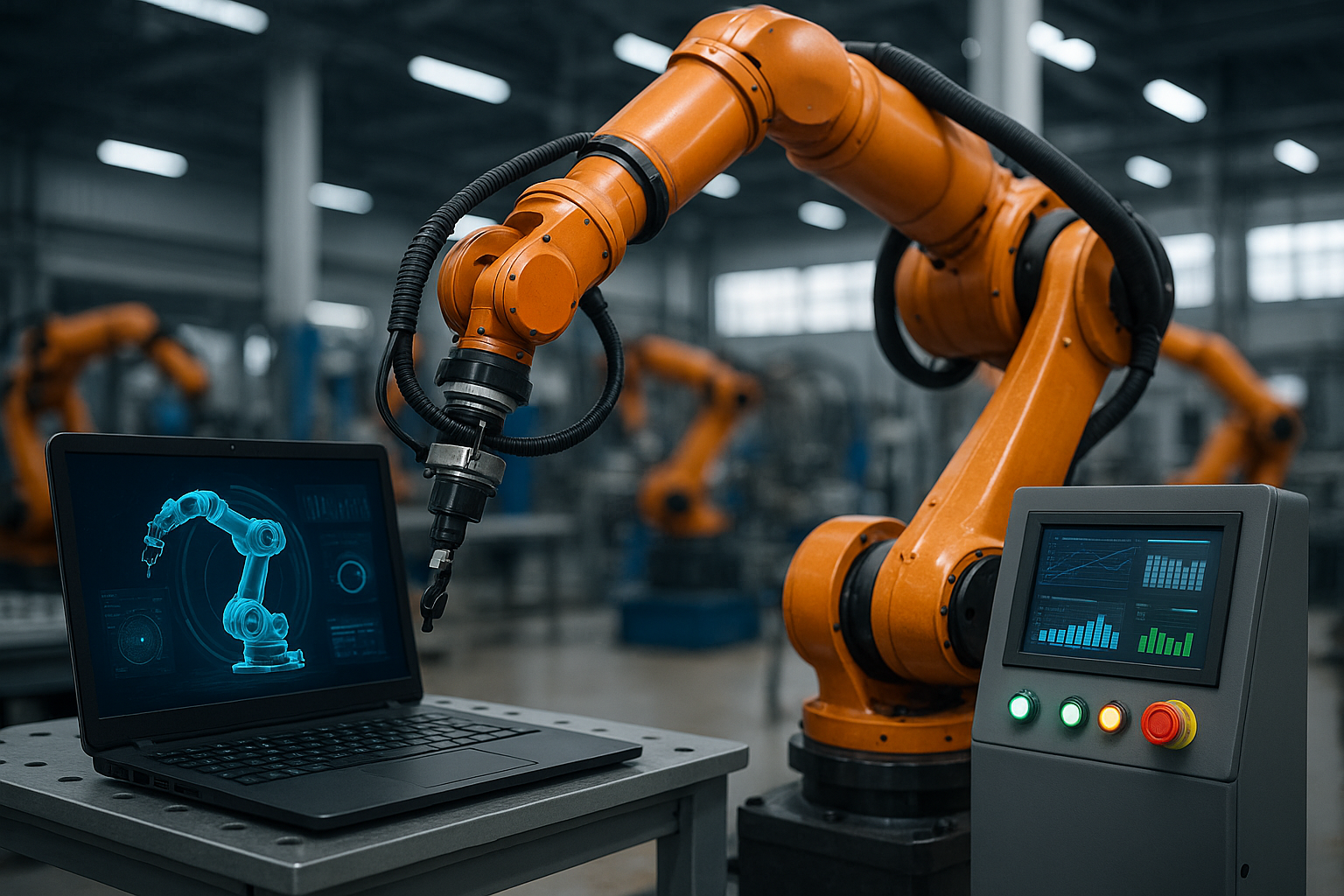Machine learning and Edge AI drive industrial automation to new era
Instead of acting as isolated tools, ML, DT, and Edge AI work together to create intelligent, adaptive, and self-optimizing industrial ecosystems. This transformation aligns not only with the goals of Industry 4.0, centered on connectivity, data transparency, and decentralized decision-making, but also with the principles of Industry 5.0, which prioritize human-centricity, sustainability, and resilience.

Machine learning (ML), coupled with Digital Twin (DT) and Edge AI technologies, is reshaping industrial automation, according to a news study published in the journal Automation. This research underscores the growing influence of intelligent systems in improving predictive maintenance, quality control, and process optimization across manufacturing sectors.
Titled "Enabling Intelligent Industrial Automation: A Review of Machine Learning Applications with Digital Twin and Edge AI Integration," the paper maps the current research landscape and highlights emerging opportunities in scalable, adaptive, and intelligent automation solutions. The authors stress that ML, DT, and Edge AI are no longer futuristic concepts but practical tools driving measurable gains in efficiency, reliability, and system resilience.
How are machine learning models transforming industrial processes?
According to the analysis, machine learning has become the backbone of modern industrial automation, replacing rigid rule-based systems with adaptive, data-driven intelligence. Traditional automation often struggled to handle the variability and complexity of manufacturing environments, but ML algorithms now learn from historical and real-time data to make predictions, recognize patterns, and optimize operations without explicit reprogramming.
The research identifies three core domains where ML is most impactful. In Predictive Maintenance (PdM), models process vibration, acoustic, and thermal sensor data to forecast equipment failures before they occur, reducing downtime and extending asset life. For Quality Control (QC), deep learning models, particularly Convolutional Neural Networks (CNNs), achieve high accuracy in detecting defects in real time, surpassing human inspection capabilities. In Process Optimization (PO), reinforcement learning and adaptive supervised algorithms fine-tune operational parameters dynamically, increasing yield, minimizing waste, and cutting energy consumption.
A striking trend highlighted by the authors is the dominance of deep learning architectures across applications, especially CNNs in visual inspection and Recurrent Neural Networks (RNNs) in time-series analysis. These models empower industrial systems to detect anomalies, predict failures, and adjust processes on the fly, fostering an environment where decision-making is increasingly data-driven and autonomous.
What role do digital twins and edge AI play in intelligent automation?
The paper also focuses on Digital Twin (DT) and Edge AI as critical technologies enhancing industrial automation. Digital Twins create high-fidelity virtual replicas of physical assets, continuously synchronized with operational data. This enables predictive simulations, closed-loop feedback, and optimization without disrupting live operations. By integrating DT with ML, manufacturers gain a powerful tool for predictive analytics, scenario testing, and real-time decision support.
Edge AI, on the other hand, brings machine learning models directly to edge devices, such as industrial controllers and embedded systems, where data is processed locally. This reduces latency, enhances real-time responsiveness, and decreases reliance on cloud infrastructure. For time-sensitive applications like defect detection and anomaly response, edge deployment ensures quick and reliable decision-making.
Instead of acting as isolated tools, ML, DT, and Edge AI work together to create intelligent, adaptive, and self-optimizing industrial ecosystems. This transformation aligns not only with the goals of Industry 4.0, centered on connectivity, data transparency, and decentralized decision-making, but also with the principles of Industry 5.0, which prioritize human-centricity, sustainability, and resilience.
What challenges and future directions define this transformation?
While the progress is significant, the authors acknowledge several persistent challenges that hinder the full potential of intelligent automation. The absence of standardized datasets limits cross-comparison of ML models, and many industrial applications still lack explainability - a crucial factor in high-stakes domains such as defect detection and predictive failure analysis. Interoperability issues across heterogeneous platforms, devices, and control layers further complicate seamless integration of AI-driven solutions.
The review also notes that many small and medium enterprises (SMEs) struggle to adopt advanced automation technologies due to legacy systems and limited computational infrastructure. Edge AI implementations face constraints in latency, energy consumption, and thermal reliability, while Digital Twins often suffer from incomplete physical–digital synchronization and scalability issues.
Furthermore, the paper outlines several research directions to overcome these barriers. Developing generalizable and explainable ML architectures is essential to build trust and applicability across different industrial contexts. Advancements in lightweight and adaptive edge intelligence are needed to make AI deployment feasible in resource-constrained environments. The authors also call for autonomous and self-evolving Digital Twins that use reinforcement and unsupervised learning for real-time adaptation. Additionally, federated and privacy-preserving learning methods are highlighted as critical for collaborative intelligence in data-sensitive industrial settings.
The study calls for human-centered and safe learning frameworks to ensure automation decisions remain aligned with operational constraints and ethical standards. Lastly, standardized and interoperable AI frameworks must be established to enable seamless integration and scalability across industrial ecosystems.
- FIRST PUBLISHED IN:
- Devdiscourse










